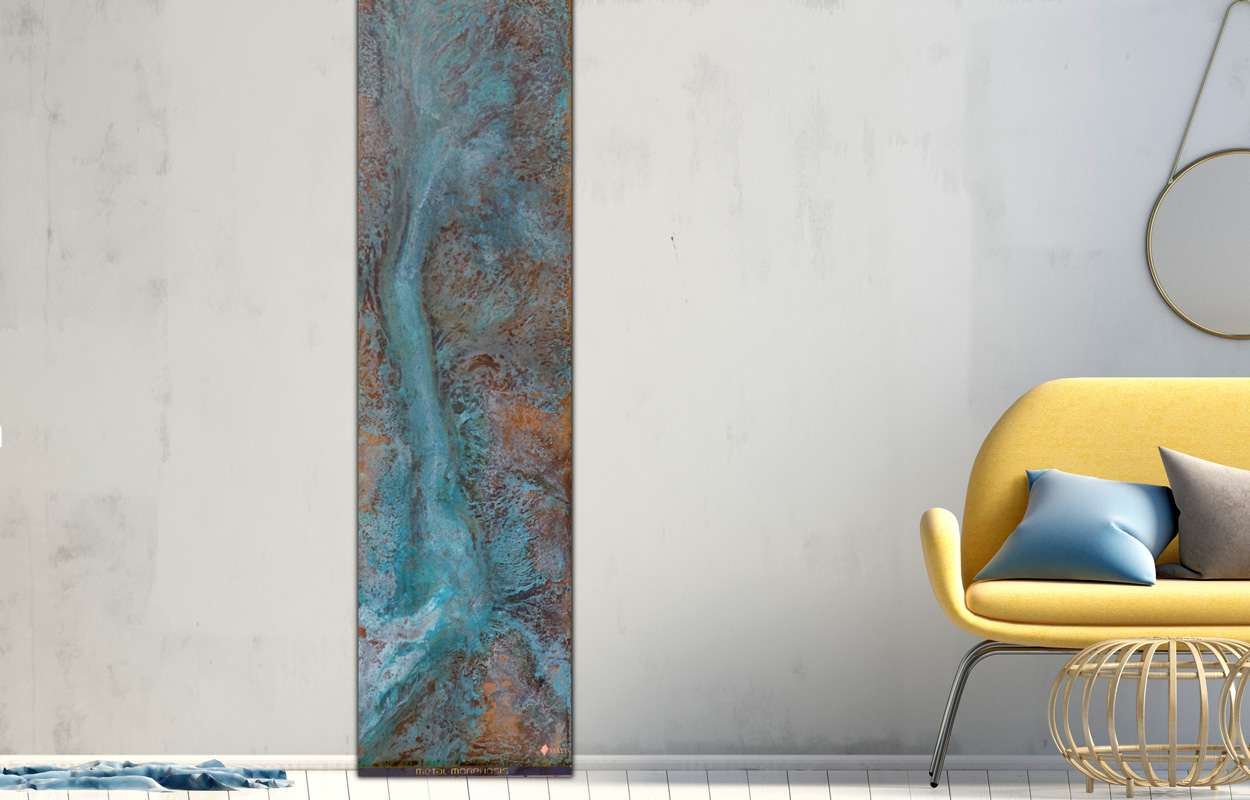The oxidations of Planium
About two years ago, PLANIUM's design department began experimenting with induced natural oxidation processes starting from metals such as Copper and Brass. The Brand has always worked with metals for floors and walls and in the past it has achieved particular chromatic and aesthetic stages dictated by oxidation (in that case of Steel). Now the creativity has given a new contribution regarding the colors and shapes that have been created.
What colors do we think of when Copper comes to mind? How many nuances arise from this metal in its natural or induced oxidation stage or even in its most unaltered substance and form?
We would be surprised to know how many chromatic and imaginative qualities this material hides, used by PLANIUM for experimental artistic oxidation projects. In fact, the brand presented a collection of Tapestries at Design Week 2022, some of which derive from the oxidation of Copper. The project was born from an idea of the Turkish Designer Isil Çagatay and was then developed by the entire PLANIUM design department.

The slabs of the MAVI and MAVI CALYPSO collection obtained from Copper are heterogeneous and testify to the most disparate contexts. Sometimes, if the prevailing color is copper itself, supported however by the shades of yellows, ochres, rye yellow or zinc or ivory, the pictorial picture will be close to hay as well as to the bucolic contexts a little pleasant of Virgilian literature, or again to the autumnal trunks that turn yellow at the top. These two collections based on the same principle differ in size (Mavi: 1h x 2L in meters; Mavi Calypso: 48L x 197h cm) and all belong to the project, symbolically and creatively renamed Metal-morphosis, both having a decorative wall function: the Mavi Calypso then being tapestries are also adaptable as dividers!
The function of these plates is decorative: we are talking about works of art that are close to the abstract painting of the twentieth century and, for part of the colors, also to the figurative one of the late nineteenth century.
And of course these colors remind us very closely of another type of scenario that the Copper Oxidation brings into vogue with sensitivity: the oceans with their dazzling somewhat mystical sea beds and the geographical maps that also give prominence to the emerged lands ... all reinforced by the contrast that refers specifically to this imaginary: the coppery tones and the blue ones.
A real Atlas of the colors of earth and water: brown, Olive, Cinnabar, Straw Yellow, Honey, Earth of Cassel, Fawn ... Cyan, Turquoise, Aquamarine, Cornflower ...